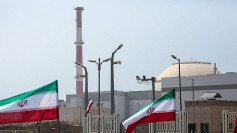Virgin Galactic, the spaceflight firm founded by Sir Richard Branson to take tourists into space, has kept its promise to send one of its crews into space before Christmas.
Branson earlier this month predicted Virgin Galactic would send two of test pilots into Low Earth Orbit (LEO) as a key first step towards attaining its goal of taking paying passengers into space. The daredevil billionaire and adventurer said he's "reasonably confident" Virgin Galactic will be the first to get to space with a crewed trip before Christmas, ahead of SpaceX and Blue Origin.
"Virgin Galactic will be the first (in space)," said Branson pointedly.
That boast came true yesterday when Virgin Galactic pilots Mark Stucky and "Rick" C.J Sturckow flew the rocket-powered spacecraft named VSS Unity to an altitude of 83 kilometers. The flight on Dec. 13 was Virgin Galactic's longest rocket-powered flight ever.
In the process, Stucky and Sturckow became Virgin Galactic's first astronauts. The U.S. Air Force and NASA consider pilots that have flown above 80 kilometers to be astronauts. The Federal Aviation Administration said both pilots will receive their commercial astronaut wings at a ceremony in Washington, D.C. early next year.
The United States, however, is the only country that defines space as a location 80 km above the Earth's surface. The rest of the world doesn't do that.
The Fédération Aéronautique Internationale (FAI) Sporting Code for astronautics recognizes as astronauts only those persons whose flights exceed an altitude of 100 kilometers or 62 miles. The de facto boundary between LEO and the Earth's upper atmosphere is called the Karman Line.
Stucky and Sturckow never crossed the Karman Line and aren't astronauts by FAI's definition.
Be that as it may, the successful sub-orbital flight by Stucky and Sturckow will be followed by more flights in 2019, including one where Branson himself will be a passenger.
"Many of you will know how important the dream of space travel is to me personally," said Branson after the successful space flight. He recalled that ever since he watched the moon landings as a child, he has looked up to the skies with wonder.
He called yesterday "a momentous day and I could not be more proud of our teams who together have opened a new chapter of space exploration."
Slung underneath the jet-powered mothership named Eve, VSS Unity took off from the Mojave Air and Space Port in the California desert. Eve released VSS Unity at an altitude above 40,000 feet.
The 50 second flight pushed VSS Unity to a speed of Mach 2.9 (3,580 km/h) as it zoomed into a climb toward the edge of space, but far short of the Karman Line.
After doing a slow backflip in low gravity, VSS Unity banked and glided back to land at Mojave. This was the company's fourth rocket-powered flight of its test program.
VSS Unity also carried four NASA-funded payloads on this mission. NASA said the four technology experiments will collect valuable data needed to mature the technologies for use on future missions.






